
Ugia is a genus of moths in the family Erebidae erected by Francis Walker in 1858.

Ischyja is a genus of moths of the family Noctuidae erected by Jacob Hübner in 1823.
Dunira is a genus of moths of the family Erebidae. The genus was described by Moore in 1885.

Egnasia is a genus of moths of the family Erebidae. The genus was first described by Francis Walker in 1859.
Ortopla is a genus of moths of the family Erebidae. The genus was erected by Francis Walker in 1859.

Platyja is a genus of moths of the family Erebidae erected by Jacob Hübner in 1823.
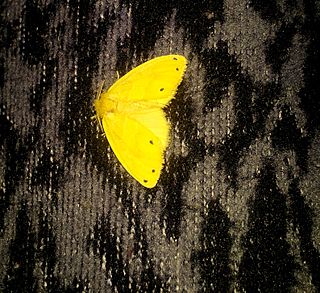
Artaxa is a genus of tussock moths in the family Erebidae erected by Francis Walker in 1855. Some of the species have urticating hairs.
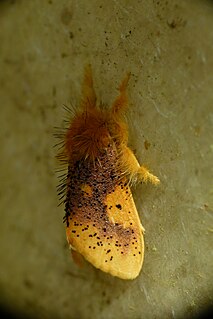
Nygmia is a genus of tussock moths in the family Erebidae. The genus was erected by Jacob Hübner in 1820.

Herochroma is a genus of moths in the family Geometridae. The genus was described by Charles Swinhoe in 1893.
Microcalicha is a genus of moths in the family Geometridae first described by Sato in 1981.
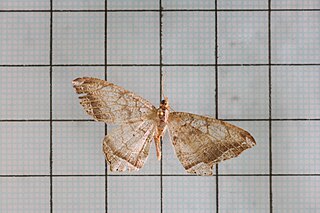
Oxymacaria is a genus of moths in the family Geometridae described by Warren in 1894.

Sarcinodes is an genus of moths in the family Geometridae erected by Achille Guenée in 1857. The species are large with pinkish, mauvish or brownish-gray body and wings. The wings are traversed by between one and three oblique, straight fasciae. The forewing apex is acute, slightly falcate. The male antennae are unipectinate, those of the female are typically filiform, in some species unipectinate. The species are found in east Asia.
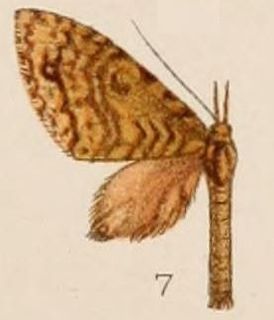
Sauris is a genus of moths in the family Geometridae erected by Achille Guenée in 1857.

Nyctemera adversata, the marbled white moth, is a moth of the family Erebidae first described by Johann Gottlieb Schaller in 1788. It is found in Sri Lanka, Bangladesh, India, Nepal, Myanmar, China territories like Tibet, Sichuan, Yunnan, Guangdong, Hong Kong, Hainan, Guangxi, Hunan, Henan, Zhejiang, Jiangxi, Fujian, Taiwan, Japan, Peninsular Malaysia, Thailand, Indonesia Philippines.

Astygisa circularia is a moth of the family Geometridae first described by Charles Swinhoe in 1902. It is found in Sumatra, Java, Sulawesi and Borneo.
Abaciscus atmala is a species of moth belonging to the family Geometridae. It was described by Charles Swinhoe in 1894. It is known from the north-eastern Himalayas, Myanmar, Siberut Island and Borneo.
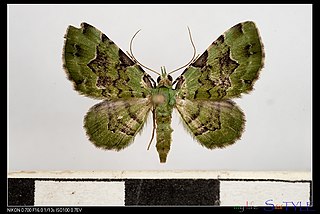
Ardonis filicata is a moth in the family Geometridae first described by Charles Swinhoe in 1892. It is found in the north-eastern Himalayas and Borneo and Sulawesi.
Glaucoclystis polyodonta is a moth in the family Geometridae first described by Charles Swinhoe in 1895. It is found in the Indian subregion and on Borneo, Sulawesi, the Bismarck Archipelago and New Guinea. The habitat consists of upper montane and dipterocarp forests.
Gymnoscelis fasciata is a moth in the family Geometridae. It is found in India and on Peninsular Malaysia, Borneo, the Philippines and Sulawesi. The habitat consists of upper montane and dipterocarp forests.
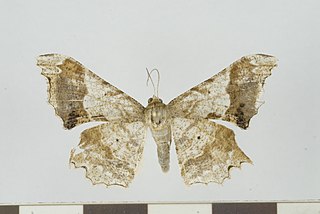
Krananda oliveomarginata is a moth in the family Geometridae first described by Charles Swinhoe in 1894. It is found in the north-eastern Himalayas, China, Taiwan, northern Vietnam, Thailand and on Peninsular Malaysia, Sumatra and Borneo.














